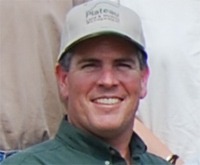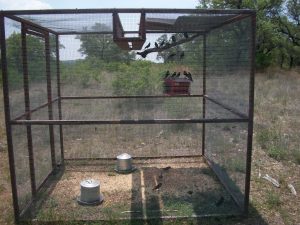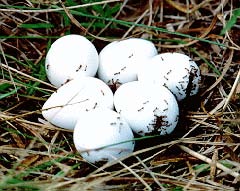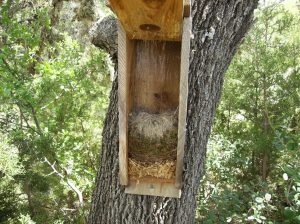Seasons – Spring 2014

Dear friends of Plateau,

Director of Sales, Tim Milligan
The days are longer, the birds are singing and the trees and grass are beginning to come back to life. Yes, another beautiful Texas spring is upon us. Although, thanks to Punxsutawney Phil, spring has come in a bit sluggishly this year. However, we all know that spring showers and warmer weather will be ushering in all the little flutters of life that we enjoy so much. The spirit of the spring season is reflected in this issue of Seasons, in which we highlight several opportunities to improve and enjoy your land.
As the weather warms up and animals become more active, now is the perfect time to begin gearing up for the upcoming year. As the saying goes, April showers bring May flowers. Thus, this is the time to consider the addition of such products as water tables to your property, as it will allow wildlife to get used to having them around the rest of the year, especially the upcoming hot summer months. On that same note, if you have ever thought about installing bird feeders, turkey feeders or nest boxes now would be the time for those as well.
Spring is also peak breeding and migratory season for birds. With the increased bird activity ‘tis the season to conduct spring breeding bird surveys. These surveys will provide you the opportunity to learn of the diversity of species on your property, as well as allow you the ability to monitor the long-term trends of species composition and abundance. As you continue reading this issue of Season’s, you will come across an interesting article on breeding season and how to keep your songbirds safe.
In this issue, we will also provide you with an important reminder about imported red fire ant control, a checklist for guidance on which activities to focus on this season and information about Eco-lab and our service agreements.
We hope this issue of Seasons will help jump-start your celebration of spring, and if there’s any way that Plateau can help you protect, enhance, or better enjoy your land during this special season, just give us a call. We’ll be here when you need us.
Tim Milligan
Director of Sales
Plateau Land & Wildlife Management
(512) 894-3479
[email protected]
Table of Contents
Breeding Season is Here: Are your songbirds safe?
Fire Ant Control Reminder
Ecolab: When World’s Collide, Environment and Landowners Benefit
Service Agreements Benefit
Spring 2014 Wildlife Management Activities Checklist
Braun & Gresham Announce Addition of Newest Attorney
Mission Mentions: Romey Swanson
Breeding Season is Here: Are your Songbirds Safe?
A Brown-headed Cowbird Reality Check for Landowners

The time to implement control is now through the end of May when the songbirds are nesting
There was a time when the Brown-headed Cowbird migrated with bison across the Great Plains. In the words of rock band Journey, “they say that the road ain’t no place to start a family” and, as birds on the road, cowbirds would lay their eggs in nests of other birds and then move on with the bison. But the days of that traveling roadshow are long gone. Where there were once open plains and roaming bison, there are now fenced pastures and cattle. After a cowbird lays its eggs in a host nest, the host bird returns to unwittingly raise the cowbird’s young as its own. As typically larger eggs that hatch earlier than the host eggs, the large and in charge cowbird hatchlings loudly vocalize their hunger, beg for food, and ultimately kick out the host bird’s offspring. Back when cowbirds migrated with bison, the impact on a host species was not as great. Many songbirds, for example, when parasitized by a cowbird will simply build a new nest. If cowbirds were moving on down the road this would work, but, today, cowbirds hang with cows in fenced pastures. The cows don’t migrate and neither do the cowbirds, which leave them to concentrate on one area and potentially decimate a species of host birds. In fact, cowbirds are known to parasitize over 225 species of birds. Moreover, on average, female cowbirds lay an astonishing 40 eggs per year in other birds’ nests. While the cowbird is a native species and has a place in the ecosystem, humans have created the conditions that make them problematic and, if we want to protect our songbirds, humans will have to take management actions.
The key time to implement control is now through the end of May when the songbirds are nesting. In addition to helping promote songbirds, cowbird trapping qualifies as an activity for Wildlife Management Tax Valuation purposes. While you can legally shoot cowbirds, you must be trained and certified by Texas Parks and Wildlife to trap them due to the possibility of trapping non-target birds that are protected by federal laws. For more information on cowbird trapping see Texas Parks and Wildlife’s cowbird trapping page click here. If you are trapping and find you need bait birds to prime your trap, contact Plateau to ask if we have bait birds available for pick-up.
Back to TopBack to Top
Fire Ant Control Reminder

Quail eggs attacked by IRFA
Plateau finds the key time for imported red fire ant (IRFA) control is now through June*, before the heat of summer hits. When the ants are hot (or cold) they go deep into the ground for temperature regulation and do not actively forage above ground. They also go deep during dry periods in order to find moisture, and come above ground during wet periods to avoid drowning. Why does IRFA control matter? The impact of imported red fire ants in the state of Texas is estimated to be $1.2 billion annually. These non-native ants are pests of urban, agricultural, and wildlife areas and can pose a serious health threat to plants and animals (Texas Imported Fire Ant Research Project). The ants can sting to death and consume any animal or insect that cannot defend itself including nestling birds and young animals, and the insects and other arthropods they eat are important forage resources for other wildlife.
For more information on IRFA control, contact Plateau.
* Treatment starts up again in September after the heat of the summer and before the cold of winter.
Back to TopBack to Top
Ecolab: When World’s Collide, Environment and Landowners Benefit
 Richard Garriott may be best known as an explorer of other worlds – a god among video gamers, he was the world’s first second-generation space traveler and sixth private astronaut. But Garriott is also a lifelong environmental advocate and conservation activist here on Earth. So when he bought some beautiful, wild Central Texas land connected to the Balcones Canyonlands Preserve, Garriott knew he wanted to do more to protect the property than simply let it be. “I believe the spirit of conservation is really high among most people,” Garriott says. “But I also think most people don’t know the legal requirements and don’t understand the issues around conservation, what defines good stewardship and land management.” Likewise, very few people know about government programs that reward landowners for being good land stewards, and even fewer understand the details. With this in mind, Garriott contacted conservation law firm Braun & Gresham, where attorney Cassie Gresham introduced him to the Texas EcoLab program. The program, developed by and offered through Braun, connects conservation- minded landowners with university ecological researchers. The landowners agree to let their property be used primarily for research for two years, at which point their land can transition into wildlife management appraisal. The EcoLab program advances significant ecological research while providing landowners with substantial – and prompt – property tax savings. “Normally, you must graze your property for five years to receive favorable agriculture valuation tax rates, and it’s an average of ten years before you see a return on your investment,” explains Gresham. “The EcoLab program offers a cost-effective alternative, with clear tax savings within the first year, and return-on-investment in just over two years.
Richard Garriott may be best known as an explorer of other worlds – a god among video gamers, he was the world’s first second-generation space traveler and sixth private astronaut. But Garriott is also a lifelong environmental advocate and conservation activist here on Earth. So when he bought some beautiful, wild Central Texas land connected to the Balcones Canyonlands Preserve, Garriott knew he wanted to do more to protect the property than simply let it be. “I believe the spirit of conservation is really high among most people,” Garriott says. “But I also think most people don’t know the legal requirements and don’t understand the issues around conservation, what defines good stewardship and land management.” Likewise, very few people know about government programs that reward landowners for being good land stewards, and even fewer understand the details. With this in mind, Garriott contacted conservation law firm Braun & Gresham, where attorney Cassie Gresham introduced him to the Texas EcoLab program. The program, developed by and offered through Braun, connects conservation- minded landowners with university ecological researchers. The landowners agree to let their property be used primarily for research for two years, at which point their land can transition into wildlife management appraisal. The EcoLab program advances significant ecological research while providing landowners with substantial – and prompt – property tax savings. “Normally, you must graze your property for five years to receive favorable agriculture valuation tax rates, and it’s an average of ten years before you see a return on your investment,” explains Gresham. “The EcoLab program offers a cost-effective alternative, with clear tax savings within the first year, and return-on-investment in just over two years.
To learn more about Texas EcoLab program and Richard Garriott, visit Braun & Gresham’s website by clicking here.
Back to TopBack to Top
Service Agreements Benefits
By Kameron Bain. Business Development Manager
Each year over 200 landowners purchase an Annual Wildlife Management Service Agreement to help implement their wildlife management plans. Here are just a few benefits these landowner are taking advantage of each year:
- Ease and Peace of Mind: Plateau will take care of your activities giving you more time to enjoy your property resting easy knowing your valuation is being taken care of and you are moving toward the goals set forth in your Wildlife Management Plan.
- Proper Documentation: Not only are your activities being covered but also well documented by our team of Wildlife Management Services Technicians and Biologist. When the CAD asks for your annual report, you will be prepared.
- Annual Review: As part of the renewal process the Plateau team reviews your property and all the documentation collected throughout the year to ensure that you continue to meet the guidelines for compliance and that your activities are productive and working toward your property goals. We then make recommendations on improvements or changes to ensure compliance and to assure you get the most out of your service agreement.
- Customized for your needs: Whether your goal is simple compliance, becoming a true land steward, or somewhere in between, we can customize the agreement to suite your goals.
- Customized for your budget: We will work with you to create an agreement that works for your property as well as your wallet. Plateau service agreement clients have options of paying all at once or quarterly throughout the service agreement year to make wildlife management even easier.
Plateau has become a leader in offering wildlife management by providing consistent, professional service to hundreds of landowners. When you are connected to Plateau through an Annual Service Agreement you will know you are not in the wildlife management game by yourself. We’re with you every step of the way and only a phone call or a visit to the office away.
Back to TopBack to Top
Spring 2014 Wildlife Management Activities Checklist
By Kameron Bain. Business Development Manager
 Spring is one of the best times of year to be a landowner in the Hill Country. The song birds are singing, the wildlife flowers are blooming and the weather is gorgeous. It is also a great time to get out on your property before the Summer heat hits and check off one or two of your Wildlife Management activities for the year. As you can see there is a lot to choose from!
Spring is one of the best times of year to be a landowner in the Hill Country. The song birds are singing, the wildlife flowers are blooming and the weather is gorgeous. It is also a great time to get out on your property before the Summer heat hits and check off one or two of your Wildlife Management activities for the year. As you can see there is a lot to choose from!
- Nest boxes & Supplemental Shelter- Are your Nest Boxes ready for Spring Birds? If not, you need to clean them ASAP!
- Predator Control
- IRFA – Predicted to be very active this spring
- Brown-headed cowbirds during breeding bird season
- Feral hog control – this is when they have the most potential impact on reproduction of native wildlife.
- Supplemental water – always important – 64% of TX is still in some stage of drought
- Spring Census Breeding Bird Survey
- RE-Seeding Native grasses and forbs – April-May
Back to TopBack to Top
Braun & Gresham Announce Addition of Newest Attorney
Braun & Gresham, PLLC. Is delighted to announce the addition of the newest attorney to our team. Margaret Menicucci brings with her a wealth of knowledge and experience with multi-party negotiations, as well as an expertise in guiding large and small groups through projects involving natural resources. She will be joining Thomas Hall in providing estate planning and risk management advice, focused on the distinctive needs of rural landowners.
To learn more about Margaret click here.
Back to TopBack to Top
Mission Mentions: Romey Swanson
 Plateau is pleased to announce that Romey Swanson, Senior Wildlife Biologist has been accepted to the James G. Teer Conservation Leadership Institute. The mission of this organization is to ensure a future legacy of well trained conservation leaders by providing professional training in leadership skills and contemporary conservation issues for today’s wildlife biologists and conservation specialists. We would like to congratulate Romey for this achievement and express our sincere pride in having such a talented biologist on our team.
Plateau is pleased to announce that Romey Swanson, Senior Wildlife Biologist has been accepted to the James G. Teer Conservation Leadership Institute. The mission of this organization is to ensure a future legacy of well trained conservation leaders by providing professional training in leadership skills and contemporary conservation issues for today’s wildlife biologists and conservation specialists. We would like to congratulate Romey for this achievement and express our sincere pride in having such a talented biologist on our team.







Sorry, the comment form is closed at this time.